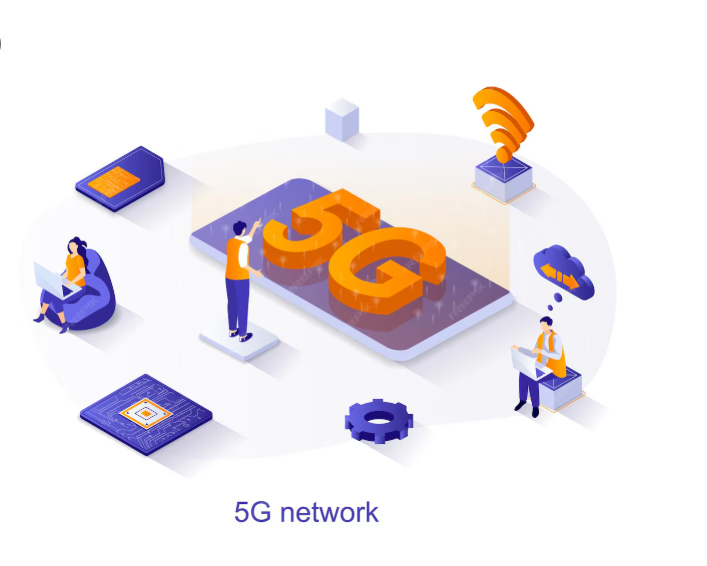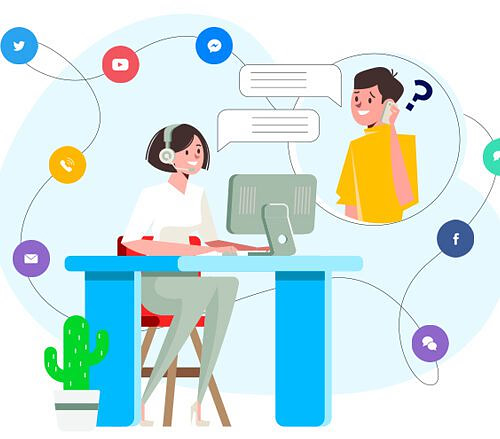Think back just a few years. You’re in the middle of an “important” video call, trying to sound confident… and then:
- The screen freezes mid-sentence or mid-meeting.
- Someone starts talking in the background.
- That one teammate talks for two minutes on mute.
Relatable? Been there, done that, we all have faced similar scenarios, and all been there—and honestly, it was exhausting. Communication tools were supposed to make work easier, but often, they created more headaches than solutions.
Fast forward to 2025, an AI era and the game has completely changed. Thanks to 5G and AI!
We are moving and how! Gone are the days of those embarrassing call glitches and frustrating delays.
Today, unified communications service providers aren’t just assisting businesses connect—they’re powering the future of how teams speak, perform, and extend. They are changing the entire game, and companies are definitely pouncing on it and making use of it to the maximum extent.
5G: No More “Am I audible now?”
5G is the thing—the kind where everything moves fast, smooth, and with zero roadblocks.
On video calls, that means:
- No more awkward delays where everyone talks over each other.
- Crystal-clear quality—even if you’re calling from a moving train.
- Real-time collaboration without the dreaded spinning buffer wheel & no glitches.
For unified communications service providers, 5G has unlocked the ability to deliver seamless experiences that actually feel like face-to-face conversations. Whether your team is spread across cities or continents, location is not a factor. The connection is finally strong enough to keep up with how we really work today—fast, mobile, and always on the go.
AI: The Coworker Who Never Forgets
Now layer AI on top of that speed, and suddenly your communication tools don’t just connect you—they work for you.
AI is like that dream coworker who:
- Takes perfect meeting notes.
- Translates conversations in real time.
- Filters out barking dogs, crying babies, or noisy coffee shops.
- Reminds you about the deadline you promised to meet next week.
Instead of juggling apps, sticky notes, and memory, AI is turning messy conversations into actionable insights. For unified communications service providers, this shift has been massive—because now they’re not just offering a “call service.” They’re offering intelligence that makes every meeting smarter.
The Power Couple: 5G + AI
Here’s where things get fun. Alone, 5G gives you speed. Alone, AI gives you smarts. Together, they’re like Batman and Robin for modern business communication.
- 5G keeps every interaction fast and reliable.
- AI makes every interaction meaningful and efficient.
So teams are not talking, they are creating, deciding, and executing—all in real time. A brainstorming session doesn’t end with “let us note this down and circle back.” It ends with AI-generated notes, task assignments, action items, and deadlines, all shared instantly over 5G.
Whoa! No one is complaining, and why would they?
For businesses, that means fewer delays, fewer miscommunications, and a lot more time spent moving forward instead of catching up.
Why Businesses Should Care
Let’s be real: communication is either a company’s most significant advantage—or its most significant bottleneck. In 2025, the businesses working with unified communications service providers who leverage 5G and AI are seeing:
- Happier teams – Nobody loves glitchy calls or wasted time. Smooth tools = smoother workdays.
- Faster decisions – When the info is right there in real time, projects move forward without weeks of back-and-forth.
- Global reach – Teams in Manila, New York, and London can collaborate as if they’re in the same room.
And let’s not underestimate the customer side. When clients experience clear, efficient communication, it builds trust—and trust is what wins deals.
The Road Ahead
So, what’s next? We’re moving toward a world where communication tools aren’t just tools—they’re partners in how we work.
Picture this:
- You have a virtual AI assistant that joins the call, takes notes, creates action items, and pings you with reminders. Isn’t it so effective and cool?
- You hop on a video call from a busy airport lounge, but AI scrubs out all the background noise. What a game-changer! Effective time usage!
- Your client speaks French, you speak English—yet the conversation flows like you’re both native speakers. Wow!
This isn’t a few years away. It’s happening now, thanks to the innovations being driven by unified communications service providers with 5G-powered AI at their core.
Wrapping It Up
The unmanageable, glitch-ridden calls of yesterday are officially over. What a relief! In their place, we’ve entered an era where 5G and AI are making conversations smoother, brighter, and dare we say—enjoyable.
If communication is the heart of business, then 5G + AI is the booster it needs to beat stronger and faster. Thanks to the innovations being driven by
unified communications service providers with 5G-powered AI at their core. Companies that embrace this shift are not just keeping up with the trends; they’re effectively racing ahead with their game.
At Telerain, we help businesses harness the full potential of 5G-powered AI! If you’re ready to leave “you’re on mute” in the past and step into the future of communication, let’s talk.
About The Author: Telerain, your trusted partner in streamlined digital business communication solutions. Our integrated cloud software service combines a comprehensive suite of channels, including voice, SMS, fax, video, chat, and email, ensuring your business stays connected most efficiently and securely.
At Telerain, we prioritize the security and compliance of your communications. Our platform automatically addresses GDPR, PCI DSS, and HIPAA regulations, ensuring that all interactions are recorded and archived in compliance. It means you can focus on your business, confident that your communications meet the highest standards of data protection and privacy.
Our user-friendly per-user-per-month Software as a Service (SaaS) model ensures flexibility without the burden of legacy technology costs and complexities.





